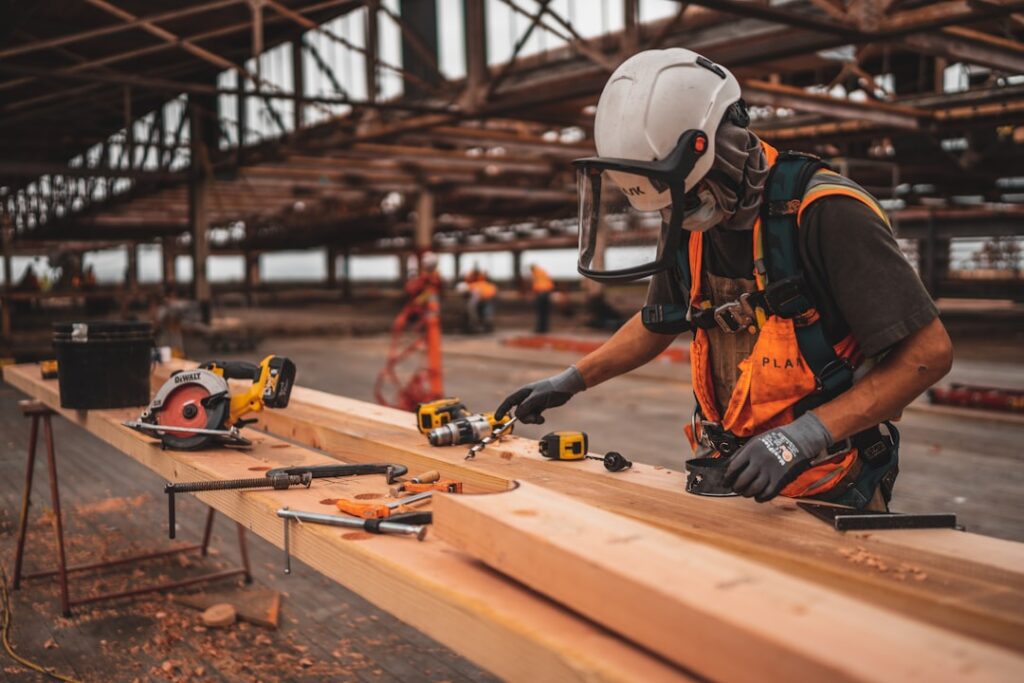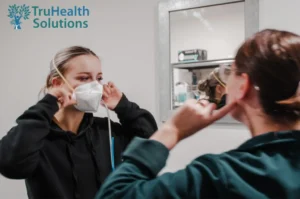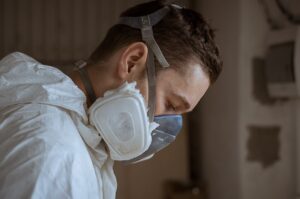Australian workplaces have changed dramatically over the past decade, yet one constant remains: the duty to keep employees healthy and safe. That duty starts before day one on the job. Pre-employment medicals, sometimes called pre-placement health assessments, give employers and candidates a clear picture of whether a person can perform a role safely. When done lawfully and thoughtfully, these medicals lower injury rates, cut compensation costs and build trust between businesses and workers. When done poorly, they expose companies to discrimination claims, privacy breaches and hefty regulatory fines. This guide unpacks every element of pre-employment medicals in Australia for 2025, drawing on current federal and state legislation, recent court cases and practical experience from high-risk industries such as mining, construction and transport.
Why Employers Use Pre-Employment Medicals
The primary purpose of a pre-employment medical is risk management. Employers must comply with section 19 of the model Work Health and Safety Act 2011, which obliges a person conducting a business or undertaking to provide a safe working environment, so far as is reasonably practicable. Medicals help fulfil that duty by identifying conditions that could endanger the candidate or co-workers. A secondary purpose is workforce planning. Reliable baseline data on hearing, lung function or musculoskeletal strength lets businesses track changes over time and intervene early.
Economic drivers also matter. Safe Work Australia’s most recent national statistics show that serious workers’ compensation claims cost Australian employers more than $9.3 billion a year in lost productivity, medical expenses and insurance premiums. Independent research cited by TruHealth estimated that organisations introducing rigorous pre-employment medicals saved up to 32 per cent on injury-related costs within two years. Those savings flow directly to the bottom line through reduced absenteeism, lower premiums and stronger retention.
The Legal Landscape in Australia
Pre-employment medicals sit at the intersection of four main legal regimes: anti-discrimination, privacy, work health and safety, and workers’ compensation. Each regime imposes distinct yet complementary obligations.
The Disability Discrimination Act 1992 (Cth) applies nationwide. Section 15 makes it unlawful to discriminate against a job applicant because of disability, while section 21A allows limited exceptions when a disability prevents the person from performing the “inherent requirements” of the role. Any medical questionnaire or test must therefore be tailored to those inherent requirements. Asking a software developer about their colour vision might be permissible if the job involves detailed graphic design but not if the role is purely back-end coding.
Handling personal health information triggers the Privacy Act 1988 (Cth). Health data is classified as “sensitive information”, so Australian Privacy Principle 3 demands that employers collect it only when reasonably necessary for their activities and with informed consent. APP 11 then requires secure storage and timely destruction of data no longer needed. Failing to meet these standards can result in civil penalties of up to $2.5 million per breach under section 13G.
Work health and safety laws differ slightly across jurisdictions but share common principles. The model WHS Act, adopted by every state and territory except Victoria, imposes the primary duty of care mentioned above and introduces hefty penalties for reckless breaches, up to $3.5 million for a corporation under section 31. Victoria’s Occupational Health and Safety Act 2004 follows similar safety duties even though the state has not adopted the model law.
Workers’ compensation legislation adds another layer. Using Queensland as an example, section 571B of the Workers’ Compensation and Rehabilitation Act 2003 allows employers to ask recruits to disclose pre-existing medical conditions. If a worker knowingly withholds relevant information and later lodges a claim, compensation may be denied. Similar provisions exist in most jurisdictions.
Recent case law underscores these rules. In Qantas Airways Ltd v Christie (1998) 193 CLR 280, the High Court confirmed that an employer may rely on inherent requirements when deciding fitness for duty, provided assessments remain objective and non-discriminatory. In Waters v Public Transport Corporation (1991) 173 CLR 349, the Court stressed the need for reasonable adjustment, signalling that outright exclusion of candidates with disability will rarely survive scrutiny unless the risk is substantial and unmanageable.
Privacy and Consent
Gaining genuine, voluntary consent is the cornerstone of any compliant pre-employment medical. Consent must be specific to the purpose of the assessment and captured in writing, usually through a privacy consent form that references the Australian Privacy Principles. The form should explain what information will be collected, why it is necessary, who will see it, how long it will be stored and the candidate’s right to withdraw consent or access their results.
Candidates frequently worry about their personal data landing in the wrong hands. Employers can allay that concern by using encrypted electronic health-record platforms and restricting access to authorised HR personnel. Under APP 12, individuals have the right to obtain a copy of their personal information on request, so a process for timely disclosure must also be in place.
Designing Job-Specific Assessments
No single test battery suits every occupation. The golden rule, endorsed by Safe Work Australia’s guidelines, is relevance to risk. Mining companies often require spirometry, audiometry and musculoskeletal agility tests because workers face dust, noise and manual-handling hazards. Aged-care providers may focus on vaccination history, functional lifting capacity and skin integrity because staff regularly assist residents physically. Office-based roles tend to need fewer physical assessments but may still include visual-acuity screening and ergonomic risk questionnaires.
The following table illustrates how industry determines testing components.
| Industry | Common Hazards | Typical Medical Tests |
|---|---|---|
| Mining | Whole-body vibration, dust inhalation, high noise | Chest X-ray, lung function, hearing test, musculoskeletal flexibility |
| Construction | Working at heights, heavy lifting | Drug and alcohol screen, cardiovascular fitness, range-of-motion assessment |
| Transport | Fatigue, prolonged sitting, sensory acuity | Sleep disorder questionnaire, vision test, reaction-time evaluation |
| Healthcare | Infection exposure, patient handling | Immunisation check, functional capacity test, skin integrity review |
| Hospitality | Heat stress, slips and falls | Pre-existing injury disclosure, balance assessment, manual-handling simulation |
Employers should document the rationale linking each test to a specific inherent requirement or hazard. That documentation will prove invaluable if a discrimination complaint arises.
What Happens During a Typical Assessment
A standard pre-employment medical begins with an occupational health questionnaire covering previous injuries, chronic conditions and medication use. The candidate then undergoes a physical examination by a qualified practitioner, often an occupational physician or accredited occupational health nurse. Vital signs such as blood pressure, heart rate and respiratory rate are recorded. Functional tests follow, ranging from grip strength to cardiovascular step tests.
Drug and alcohol screening is increasingly common, particularly after high-profile incidents in safety-critical sectors. Urine or saliva samples are collected under chain-of-custody procedures compliant with Australian Standard AS/NZS 4308:2008 to ensure integrity. Vision testing may include Ishihara plates for colour discrimination, while audiometry employs calibrated audiometers in a noise-controlled booth.
Upon completion, the clinician issues a fitness-for-work report to the employer. Reports generally categorise candidates as fit, fit with restrictions, or unfit. The underlying medical data remains confidential and is not shared with the employer unless explicit consent exists.
How Employers Implement a Compliant Programme
Organisations that succeed with pre-employment medicals follow a structured pathway that mirrors Safe Work Australia’s risk-management process. They start with a thorough job analysis, mapping each task to potential hazards. They publish a clear statement in job advertisements or offer letters that a medical assessment forms part of recruitment. They partner with accredited providers, sometimes through national networks like Sonic HealthPlus or Jobfit, to ensure consistent quality across sites.
Booking systems integrate with applicant-tracking software to minimise delays. Candidates receive electronic consent forms and information sheets well before their appointment, allowing them to raise concerns or request reasonable adjustments. After the assessment, results flow back through secure portals, and HR professionals compare any restrictions with inherent requirements and possible adjustments. Decisions and rationales are recorded in case of future legal challenge. Data older than the organisation’s statutory record-keeping obligations is purged, satisfying APP 11.
Candidate Preparation Tips
Job seekers often experience anxiety about pre-employment medicals, fearing that minor health issues could cost them a role. In reality, transparency pays dividends. Candidates should gather relevant documentation, such as specialist letters or medication lists, ahead of time. They should avoid strenuous exercise and caffeine for several hours before cardiovascular tests to prevent elevated heart rates. Adequate hydration supports reliable urine sampling. For audiometry, avoiding loud music at least 14 hours before testing reduces the chance of temporary threshold shift. Candidates prescribed medications should continue them unless a doctor advises otherwise, as sudden withdrawal can skew results.
Costs and Return on Investment
The price of a pre-employment medical varies with complexity. In 2025, a basic assessment for an office worker averages $135, while a comprehensive mining medical with chest X-ray and functional capacity test can exceed $600. Employers sometimes balk at those figures, but comparative studies show strong pay-offs. Safe Work Australia’s economic modelling indicates that every dollar spent on preventive health assessments returns between $2.30 and $3.00 in avoided injury costs over three years.
The table below compares direct and indirect costs for businesses that run comprehensive medicals against those that do not, based on aggregated data from WorkCover insurers.
| Cost Category (per worker, per year) | With Medicals | Without Medicals |
|---|---|---|
| Workers’ compensation premiums | $640 | $850 |
| Lost-time injury days | 1.2 | 3.8 |
| Recruitment turnover expenses | $420 | $610 |
| Total estimated cost | $1,060 | $1,460 |
These figures reveal a conservative saving of $400 per employee annually, quickly offsetting the initial outlay.
Case Studies across Industries
A Queensland open-cut mine introduced a revamped pre-employment medical programme in 2022 after two manual-handling injuries within six months cost more than $300,000 in claims and downtime. The company incorporated functional lifting tests into its screening process and rejected or reassigned candidates whose safe lifting capacity fell below role requirements. Over the next two years, the mine reported zero lost-time injuries attributable to manual handling, and insurance premiums dropped by 18 per cent.
A Victorian aged-care provider faced rising musculoskeletal injuries among personal care assistants. Management collaborated with an occupational therapist to develop a job-specific assessment focusing on core strength and transfer techniques. Candidates who demonstrated weakness received conditional offers contingent on completing a targeted exercise programme. Incident statistics released in 2024 showed a 45 per cent reduction in back-strain claims and a $190,000 cut in premium adjustments.
In the transport sector, a national logistics firm began mandatory sleep-apnoea screening for drivers after the National Transport Commission highlighted fatigue-related crashes. Drivers diagnosed with moderate or severe sleep apnoea received continuous positive airway pressure devices and medical clearance before commencing duties. During the first year, fatigue-related near-miss reports fell by 67 per cent.
Penalties for Getting it Wrong
The upside of effective medicals is compelling, yet the downside of non-compliance can be devastating. In 2023, a medium-sized construction firm in New South Wales paid $280,000 in an out-of-court settlement after a candidate alleged discrimination when her pregnancy-related lifting restrictions were used to withdraw a job offer. The Australian Human Rights Commission emphasised that the employer could have accommodated temporary restrictions under the Disability Discrimination Act.
Privacy breaches carry separate risks. A 2024 decision by the Office of the Australian Information Commissioner fined a labour-hire company $150,000 after unsecured email transmissions exposed candidates’ pathology results. The OAIC stressed the need for encrypted file-sharing and minimal data retention.
Work health and safety regulators also wield substantial enforcement powers. Under the Work Health and Safety and Other Legislation Amendment Act 2024 (Qld), category 1 reckless conduct penalties increased to $3.5 million for corporations and $600,000 plus five years’ imprisonment for officers. While pre-employment medical failures rarely reach that threshold, an employer that knowingly allows an unfit worker to perform high-risk tasks may face prosecution if serious harm occurs.
Frequently Asked Questions
Can an employer require a drug test as part of a pre-employment medical? Yes, provided the testing is relevant to the role, conducted under proper chain-of-custody procedures and consistent with an established drug and alcohol policy. The practice is common in safety-sensitive sectors like aviation and mining.
Can a candidate refuse a medical? Candidates may decline, but an employer can lawfully withdraw an offer if the medical is genuinely required to assess the inherent requirements of the role and no reasonable adjustment can substitute.
Will a pre-existing condition automatically disqualify me? Not necessarily. The key question is whether the condition prevents you from performing essential tasks safely, even with reasonable adjustments. Many chronic conditions, such as controlled diabetes or mild asthma, seldom pose barriers.
How long does a medical last? Basic assessments take 30–45 minutes, while comprehensive medicals that include X-rays or functional capacity testing can extend to two hours.
Who sees my results? Typically, only the occupational clinician and authorised HR personnel view your full medical data. Employers usually receive a summary fitness outcome rather than detailed medical information.
The Future of Pre-Employment Medicals
Technological advances and regulatory reforms will continue to shape the landscape. Wearable health devices and AI-driven risk analytics already allow more precise measurement of functional capacity. The 2024 amendments to Queensland’s WHS legislation hint at a broader national trend toward mandatory, documented risk assessments for high-hazard roles. Safe Work Australia is reviewing the model WHS Regulations with a report due in 2026, and industry insiders expect stronger guidance on psychological fitness as part of holistic health assessments.
Virtual medical platforms gained traction during the COVID-19 pandemic and remain popular for low-risk roles, enabling remote questionnaires and video consultations that cut costs and speed up hiring. Privacy controls will tighten as the Office of the Australian Information Commissioner pushes for greater transparency and encryption standards in health-data handling.
Conclusion
Pre-employment medicals occupy a critical but complex space in Australian employment law and workplace safety. When structured around job-specific risks, supported by informed consent, and aligned with privacy and discrimination legislation, they protect workers and deliver measurable financial returns. They also demonstrate a company’s commitment to wellness and compliance, enhancing employer branding in a competitive labour market. Conversely, blanket or poorly designed medicals expose businesses to legal sanction and reputational damage.
Employers should start with a rigorous job analysis, engage reputable occupational health providers, and maintain transparent communication with candidates. Workers should view medicals not as barriers but as safeguards ensuring they start new roles on a sound footing. With regulatory scrutiny climbing and workforce expectations rising, investing in best-practice pre-employment medicals is no longer optional. It is an essential pillar of responsible, sustainable business in Australia’s dynamic economy.









